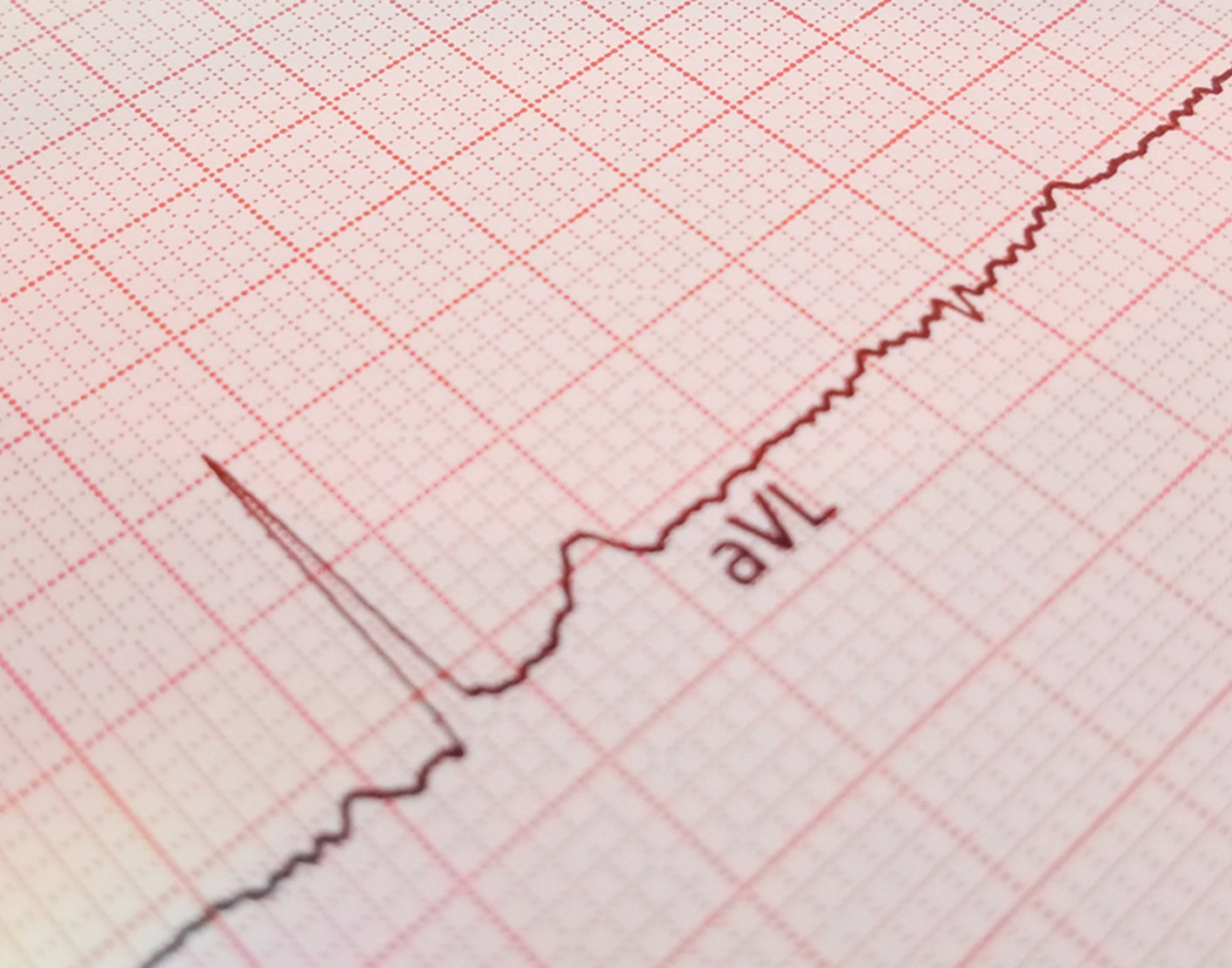
Electrocardiogram
Definition
An electrocardiogram (ECG) is a test that records the electrical activity of the heart.
Alternative Names
ECG; EKG
How the Test is Performed
You will be asked to lie down. A technician will clean several areas on your arms, legs, and chest, and then will attach small patches called electrodes to those areas. It may be necessary to shave or clip some hair so the patches stick to the skin. The number of patches used may vary.
The patches are connected by wires to a machine that turns the heart's electrical signals into wavy lines, which are often printed on paper. The health care provider reviews the test results.
You will need to remain still during the procedure. The technician may also ask you to hold your breath for a few seconds as the test is being done.
It is important to be relaxed and warm during an ECG recording because any movement, including shivering, can alter the results.
Sometimes this test is done while you are exercising or under light stress to look for changes in the heart. This type of ECG is often called a stress test.
How to Prepare for the Test
Make sure your provider knows about all the medicines you are taking. Some medicines can interfere with test results.
Do not exercise or drink cold water immediately before an ECG because these actions may cause false results.
How the Test will Feel
An ECG is painless. No electricity is sent through the body. The electrodes may feel cold when first applied. In rare cases, some people may develop a rash or irritation where the patches were placed.
Why the Test is Performed
An ECG is used to measure:
- Any damage to your heart
- How fast your heart is beating and whether it is beating normally
- The effects of medicines or devices used to control your heart (such as a
pacemaker ) - The size and position of your heart chambers
An ECG is often the first test done to determine whether a person has
- You have
chest pain orpalpitations - You are scheduled for surgery
- You have had heart problems in the past
- You have a strong history of heart disease in the family
Normal Results
Normal test results most often include:
- Heart rate: 60 to 100 beats per minute
- Heart rhythm: Consistent and even
What Abnormal Results Mean
Abnormal ECG results may be a sign of:
- Damage or changes to the heart muscle
- Changes in the amount of the electrolytes (such as potassium and calcium) in the blood
- Congenital heart defect
Enlargement of the heart - Fluid or swelling in the sac around the heart
Inflammation of the heart (myocarditis)- Past or current
heart attack - Poor blood supply to the heart arteries
- Abnormal heart rhythms (
arrhythmias )
Some heart problems that can lead to changes on an ECG test include:
Atrial fibrillation/flutter - Heart attack
Heart failure Multifocal atrial tachycardia Paroxysmal supraventricular tachycardia Sick sinus syndrome Wolff-Parkinson-White syndrome
Risks
There are no risks.
Considerations
The accuracy of the ECG depends on the condition being tested. A heart problem may not always show up on the ECG. Some heart conditions never produce any specific ECG changes.
References
Brady WJ, Harrigan RA, Chan TC. Basic electrocardiographic techniques. In: Roberts JR, Custalow CB, Thomsen TW, eds. Roberts and Hedges' Clinical Procedures in Emergency Medicine and Acute Care. 7th ed. Philadelphia, PA: Elsevier; 2019:chap 14.
Ganz L, Link MS. Electrocardiography. In: Goldman L, Cooney KA, eds. Goldman-Cecil Medicine. 27th ed. Philadelphia, PA: Elsevier; 2024:chap 42.
Mirvis DM, Goldberger AL. Electrocardiography. In: Libby P, Bonow RO, Mann DL, Tomaselli GF, Bhatt DL, Solomon SD, eds. Braunwald's Heart Disease: A Textbook of Cardiovascular Medicine. 12th ed. Philadelphia, PA: Elsevier; 2022:chap 14.
Review Date: 08/05/2024
The information provided herein should not be used during any medical emergency or for the diagnosis or treatment of any medical condition. A licensed physician should be consulted for diagnosis and treatment of any and all medical conditions. Call 911 for all medical emergencies. Links to other sites are provided for information only -- they do not constitute endorsements of those other sites. Copyright ©2019 A.D.A.M., Inc., as modified by University of California San Francisco. Any duplication or distribution of the information contained herein is strictly prohibited.
Information developed by A.D.A.M., Inc. regarding tests and test results may not directly correspond with information provided by UCSF Health. Please discuss with your doctor any questions or concerns you may have.



























